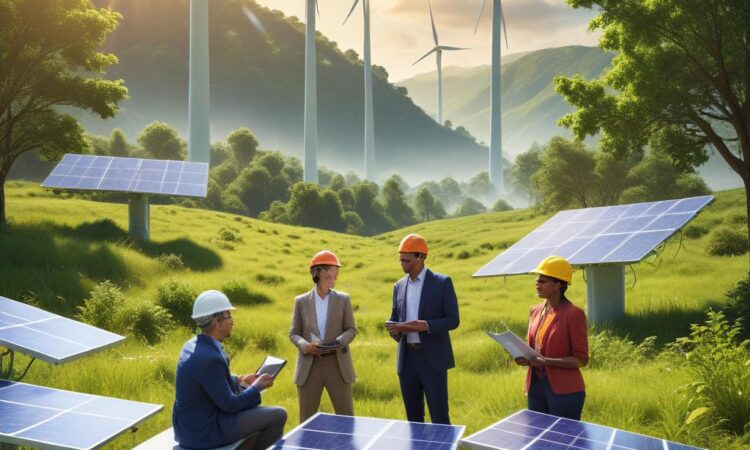Sustainable Technology Innovations: A New Era of Environmental Responsibility
The global climate crisis demands innovative solutions, and the realm of sustainable technology is rising to the challenge. From harnessing the power of the sun and wind to optimizing energy grids and capturing carbon emissions, these emerging technologies are transforming our approach to environmental sustainability.
Renewable Energy Solutions: Powering a Clean Future
Renewable energy sources like solar, wind, hydro, and geothermal power offer a viable alternative to fossil fuels, reducing greenhouse gas emissions and promoting cleaner air. Solar photovoltaic (PV) technology, for instance, converts sunlight directly into electricity, powering homes and businesses with renewable energy. Wind turbines, harnessing the kinetic energy of wind, generate clean electricity on a large scale. Hydropower, utilizing the flow of water, provides a reliable and sustainable source of energy. Geothermal energy, tapping into the Earth’s internal heat, offers a consistent and environmentally friendly energy source.
The advancements in renewable energy technology have led to increased efficiency and affordability. Solar panels have become more efficient in converting sunlight into electricity, while wind turbines have become more robust and capable of generating more energy. These improvements, coupled with government incentives and falling costs, have made renewable energy a more attractive option for individuals and businesses alike.
Smart Grids: Optimizing Energy Consumption
Smart grids, the next generation of electricity grids, are revolutionizing how we manage and distribute energy. Utilizing advanced technologies like sensors, communication networks, and data analytics, smart grids optimize energy efficiency, improve reliability, and enhance grid resilience. These intelligent systems monitor energy consumption in real-time, enabling utilities to adjust supply based on demand, reducing energy waste and improving grid performance.
Smart grids empower consumers by providing them with real-time energy usage information, facilitating informed decision-making and promoting energy conservation. They also enhance grid security by detecting and responding to anomalies and disruptions, ensuring a stable and reliable energy supply.
Carbon Capture Technologies: Mitigating Climate Change
Carbon capture and storage (CCS) technologies are crucial for mitigating climate change by capturing and storing carbon dioxide (CO2) emissions from power plants, industrial facilities, and other sources. CCS works by capturing CO2 from flue gases, transporting it to storage sites, and permanently storing it underground. This technology plays a significant role in reducing the overall carbon footprint and achieving net-zero emissions.
Various carbon capture technologies are being developed, including post-combustion capture, pre-combustion capture, and direct air capture. Post-combustion capture captures CO2 from flue gases after combustion, while pre-combustion capture removes CO2 before combustion. Direct air capture, a more recent technology, captures CO2 directly from the atmosphere.
The Future of Sustainable Technology: A Collaborative Effort
The development and implementation of sustainable technologies require a collaborative effort involving governments, businesses, research institutions, and individuals. Governments can play a crucial role by providing policy support, financial incentives, and regulatory frameworks that encourage innovation and investment in sustainable technologies. Businesses can invest in research and development, adopt sustainable practices, and integrate sustainable technologies into their operations.
Research institutions are essential in developing and refining sustainable technologies, while individuals can make a difference by adopting energy-efficient practices, supporting sustainable businesses, and advocating for environmental policies.
Conclusion: Shaping a Sustainable Future
Sustainable technology innovations offer a beacon of hope in addressing climate change and promoting environmental sustainability. By harnessing the power of renewable energy, optimizing energy consumption with smart grids, and mitigating carbon emissions through carbon capture technologies, we can transition to a cleaner, greener future. This journey requires collaboration, innovation, and a shared commitment to safeguarding our planet for generations to come.

